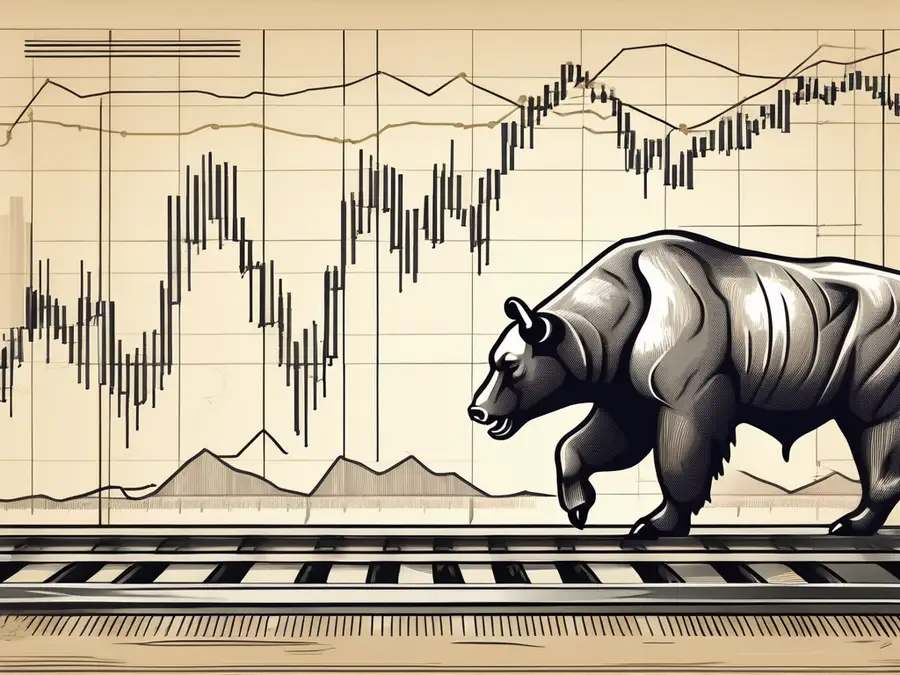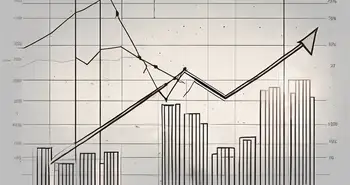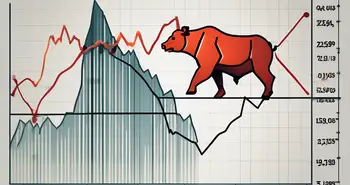Interpreting Market Cycles: A Deep Dive into the Dow Theory Framework

In this comprehensive guide, I will delve into the intricacies of the Dow Theory and help you gain a deeper understanding of this crucial aspect of financial analysis. Whether you are an experienced investor or just getting started, this article will provide you with the knowledge you need to navigate the complexities of the stock market using the Dow Theory.
The Origins of Dow Theory
The Dow Theory, named after Charles Dow, is the cornerstone of technical analysis in the stock market. Charles Dow was the co-founder of Dow Jones & Company and the first editor of The Wall Street Journal. His astute observations and analytical approach laid the foundation for what is now known as the Dow Theory.
Charles Dow: The Man Behind the Theory
Charles Dow was a pioneer in the field of financial journalism and played a pivotal role in shaping the modern stock market. His analytical prowess and ability to identify trends in the market allowed him to develop the framework for the Dow Theory. It is thanks to his groundbreaking work that we have a comprehensive understanding of market behavior.
The Birth of Dow Theory
The Dow Theory was not explicitly codified by Charles Dow himself. Instead, it was developed by his successors, William P. Hamilton and Robert Rhea, who expanded on Dow's principles and refined the theory. Their collective efforts transformed the Dow Theory into the robust framework it is today.
William P. Hamilton, a renowned financial journalist and editor, was one of the key figures responsible for the development of the Dow Theory. Hamilton was known for his meticulous research and keen insights into market trends. He built upon Dow's initial observations and further refined the theory by introducing the concept of confirmation. According to Hamilton, for a market trend to be considered valid, it must be confirmed by both the industrial and transportation averages.
Robert Rhea, another influential figure in the evolution of the Dow Theory, further expanded on Hamilton's work. Rhea was a Wall Street trader and technical analyst who dedicated his career to studying market behavior. He introduced the concept of “phases” in the market, which helped investors identify the different stages of a trend. Rhea's contributions added depth and nuance to the Dow Theory, making it an indispensable tool for market analysis.
Fundamental Principles of Dow Theory
To comprehend the intricacies of the Dow Theory, it is essential to grasp its fundamental principles. Let's explore the key principles that underpin this theory:
The Three Types of Market Trends
The Dow Theory categorizes market trends into three distinct types: primary trends, secondary trends, and minor trends. Primary trends are the long-term movements of the market, secondary trends are temporary counter-movements within primary trends, and minor trends are short-term fluctuations that occur within secondary trends. Understanding these trends is vital for successful stock market analysis.
The Phases of Primary Trends
Primary trends can be broken down into three phases: accumulation, public participation, and distribution. During the accumulation phase, smart money investors start buying stocks. In the public participation phase, the general public begins to notice the trend and starts buying stocks, leading to price increases. The distribution phase occurs when smart money investors start selling off their shares. These phases help identify the overall direction of the market.
The Importance of Volume
Volume analysis is an integral part of the Dow Theory. It helps determine the strength of a market trend. Increasing volume during an upward trend indicates buying pressure, while decreasing volume during a downward trend suggests selling pressure. By analyzing volume along with price movements, investors can gain valuable insights into market behavior.
The Six Basic Tenets of Dow Theory
The Dow Theory comprises six basic tenets encapsulating the essence of this theory. These tenets provide a framework for understanding market behavior and making informed investment decisions:
The Market Discounts Everything
According to the Dow Theory, the stock market reflects all available information. Fundamental analysis, technical analysis, and investor sentiment are all factored into the market price. Therefore, it is essential to consider all relevant factors when analyzing securities.
Market Trends Have Three Phases
As mentioned earlier, market trends can be divided into three distinct phases. By understanding these phases, investors can identify the trend's strength and potential reversals, allowing them to make informed trading decisions.
Stock Market Indexes Must Confirm Each Other
The Dow Theory emphasizes the importance of confirmation between different market indexes. To validate a trend, the Dow Jones Industrial Average (DJIA) and the Dow Jones Transportation Average (DJTA) should move in the same direction. If one index creates a new high or low, the other should follow suit. This confirmation serves as a strong signal for investors.
Trends Exist Until Definitive Signals Prove They Have Ended
Dow Theory suggests that trends persist until there is a definitive signal indicating a reversal. It advises investors not to act prematurely by assuming a trend change without substantial evidence. Waiting for confirmation ensures a higher degree of accuracy in decision-making.
Criticisms and Limitations of Dow Theory
Despite its importance and relevance, the Dow Theory is not without its criticisms and limitations. Let's explore a couple of the key concerns associated with this theory:
The Subjectivity of Trend Identification
One of the main criticisms of the Dow Theory is the subjectivity involved in identifying trends. While the theory outlines the various phases and characteristics of trends, determining precisely when a trend starts or ends can be challenging. This subjectivity may lead to conflicting interpretations among analysts.
The Lack of Timing Predictability
Another limitation of the Dow Theory is the absence of timing predictability. While the theory provides valuable insights into market trends, it does not offer specific guidance on timing the entry or exit points of a trade. Investors should exercise caution and employ other technical analysis techniques to complement the Dow Theory.
In my experience as an expert in the field, I've seen the Dow Theory serve as a reliable guide when analyzing the stock market. By understanding the principles and tenets that underpin this theory, investors can make more informed decisions and navigate the complexities of the market with greater confidence.
FAQs
What is the Dow Theory?
The Dow Theory is a technical analysis framework developed by Charles Dow, the co-founder of Dow Jones & Company. It focuses on understanding market trends and identifying potential reversals.
What are the three types of market trends identified by the Dow Theory?
The Dow Theory categorizes market trends into primary trends, secondary trends, and minor trends. Primary trends are long-term movements, secondary trends are temporary counter-movements, and minor trends are short-term fluctuations.
How can volume analysis be useful when applying the Dow Theory?
Volume analysis helps determine the strength of a market trend. Increasing volume during an upward trend indicates buying pressure, while decreasing volume during a downward trend suggests selling pressure.
What is the importance of confirmation between different market indexes according to the Dow Theory?
The Dow Theory emphasizes that the Dow Jones Industrial Average (DJIA) and the Dow Jones Transportation Average (DJTA) should move in the same direction to validate a trend. This confirmation serves as a strong signal for investors.
Are there any limitations to the Dow Theory?
Yes, the Dow Theory is not without its limitations. One criticism is the subjectivity involved in trend identification, as precisely determining the start and end of a trend can be challenging. Additionally, the Dow Theory does not offer specific guidance on timing entry or exit points.
By equipping yourself with a comprehensive understanding of the Dow Theory, you can enhance your investment analysis skills and make more informed decisions in the stock market. Remember, successful investing requires diligence, discipline, and continuous learning. Now go forth and conquer the markets with your newfound knowledge of the Dow Theory!
Now that you're equipped with the knowledge of the Dow Theory, why not put it into practice with Morpher? As a revolutionary trading platform, Morpher offers a unique, zero-fee trading experience across a multitude of markets. Whether you're interested in stocks, cryptocurrencies, or even niche markets like NFTs, Morpher's blockchain technology provides the tools for a seamless and innovative investment journey. With features like fractional investing, short selling without interest fees, and up to 10x leverage, Morpher empowers you to trade on your terms. Plus, with the safety of a non-custodial wallet, you maintain full control over your investments. Ready to transform your trading experience? Sign Up and Get Your Free Sign Up Bonus at Morpher.com and start leveraging your market insights today.

Disclaimer: All investments involve risk, and the past performance of a security, industry, sector, market, financial product, trading strategy, or individual’s trading does not guarantee future results or returns. Investors are fully responsible for any investment decisions they make. Such decisions should be based solely on an evaluation of their financial circumstances, investment objectives, risk tolerance, and liquidity needs. This post does not constitute investment advice.

Painless trading for everyone
Hundreds of markets all in one place - Apple, Bitcoin, Gold, Watches, NFTs, Sneakers and so much more.

Painless trading for everyone
Hundreds of markets all in one place - Apple, Bitcoin, Gold, Watches, NFTs, Sneakers and so much more.









